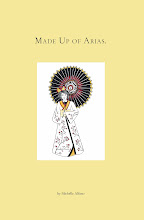 |
| Robert and Patti |
Patti Smith
Just Kids by Patti Smith (Harper Collins, 2010) 307 pages
This book is magical, special - as magical and special as Patti Smith herself. I have never read much of Smith's writing and only have cursory knowledge of her music but she intrigues me nonetheless. I imagined her as tough and determined but what amazes me here is her vulnerability and innocence throughout the book. Physically beautiful in a strange and androgynous way, she is also brave and ruthlessly honest. And I liked her definition of androgynous here (as she is often described): both beautiful and ugly at the same time.
In this memoir she focuses on her relationship with Robert Mapplethorpe (1946 –1989), future photographer and artist. They do appear to be kindred spirits when they meet up in Brooklyn in the mid 60s. Smith was searching for a place to crash with friends, having recently moved from New Jersey to seek her fortunes in NYC. Robert had arrived from Queens, NY. He likely appeared to her then as he appears to us in these photographs: arresting, feral, otherworldly beautiful.
Patti reveres Bob Dylan, the poet Rimbaud and other artists, reads poetry and philosophy, dreams of a fuller, more fulfilling life as an artist and ventures to NYC in pursuit of it. Robert Mapplethorpe and many other adventures await her.
They meet, they couple, separate temporarily then come together again. Robert is sometimes fragile physically and often it is Patti who must work to provide enough money for them to live usually as a bookstore clerk or a modest reviewer of records for a small magazine. Whatever space they inhabit, and some are truly harrowing, she paints a picture of magic and beauty: "My room reflected the bright mess of my interior world, part boxcar, part fairyland."
They have met at a crucial time and place - New York city in the 1960s and 70s - and everyone, but everyone, crosses their paths when they take up residence in the notorious Chelsea Hotel in 1970 and start hanging around Max's Kansas City nightclub.
The cavalcade of literary and musical stars and wannabes people the pages of this book: poet Gregory Corso takes Patti to poetry readings. Allen Ginsberg tries to pick her up, buying her lunch, thinking that she is a boy. Bob Dylan-cohort Bob Neuwirth challenges her to turn her poetry into music lyrics. She consoles Janis Joplin when she is blue and listens to Jimi Hendrix's musings about bringing together musicians in Woodstock. She dances with YSL model Loulou de la Falaise at Max's. She hangs/sleeps with the poet Jim Carroll. She acts in plays at La Mama Experimental Theatre. She listens to the Velvet Underground live.
The playwright Sam Shepherd courts the initially clueless Patti who thinks he is a drummer in an indie band she has just seen him play with. She recounts an enchanting first encounter with Shepherd (Smith has no idea who the multiple Obie winning playwright is and has to be told this by an incredulous drag queen at Max's).
Habitués from Warhol's The Factory drift in and out of her world ... usually screaming or strutting or competing for the attention of the now mostly absent Andy Warhol who once reigned over all of them. Throughout, the ghosts of Andy Warhol - the post-Valerie Solanas assassination attempt Warhol - and the soon to be departed from this earth Edie Sedgwick who served as Warhol's muse - flutter at the perimeters of Patti's life. Robert sees himself as an artist who might be the equal of Warhol given the chance. Patti venerates Edie whom she remembers as a faun-like figure hovering on a page torn from Vogue and placed on her bedroom wall.
As Mapplethorpe begins to find himself as an artist, he also discovers his more complex sexuality - attraction to men, attraction to S&M, engaging in hustling to pay the bills. These burgeoning interests begin to inform his art and his photography. It also causes him to break away from Patti:
Paradoxically, he seemed to want to draw me closer. Perhaps it was the closeness before the end, like a gentleman buying his mistress jewels before telling her it's over.She refers to him as "my artist" the way other women say "my lover".
Robert finds a male lover; Patti reluctantly moves on to the poet Jim Carroll and then Sam Shepherd - both are committed to other passions - Jim to his drug addiction and Sam to his wife and child. But it is her affiliation with these artistic people that helps prod her into her first creative forays. Patti and Robert remain tied to each other as lovers float in and out of their lives sometimes sharing accommodations, and always sharing artistic work and dreams.
She gives a much anticipated reading peopled by Warhol and the denizens of the rock and art worlds in New York. She co-writes Cowboy Mouth with Sam Shepherd in 1971 but it is not until 1975 that Patti produces her first album Horses. We read, with fascination, about her slow, sometimes timid, evolution, into a singer/poet of extraordinary talent while Robert becomes an internationally recognized photographer of sometimes graphic and controversial material.
As many know, Mapplethorpe died of AIDS related ailments in 1989. The bond continued to the end. Many have come and gone and I'm glad Smith was there to document it all.











No comments:
Post a Comment